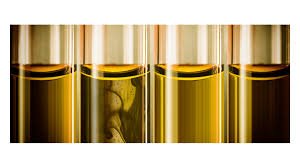Standardization Techniques for Viscometer Accuracy.

Standardization Techniques for Viscometer Accuracy
Introduction
Viscometers are essential instruments used to measure the viscosity of fluids, which is a critical parameter in various industries such as pharmaceuticals, food processing, petrochemicals, and paints. Accurate viscosity measurements depend heavily on the calibration and standardization of the viscometer. Standardization ensures that the instrument provides consistent, reliable, and traceable results in accordance with international standards.
Why Standardization is Important
-
Accuracy: Ensures the readings are close to the true viscosity of a reference material.
-
Consistency: Provides reliable and repeatable results over time.
-
Traceability: Allows results to be traced to national or international standards.
-
Compliance: Meets quality standards such as ISO, ASTM, or GMP regulations.
Types of Viscometers and Standardization Needs
Different viscometers require different standardization techniques:
-
Capillary (U-tube) Viscometers
-
Rotational Viscometers (Brookfield-type)
-
Falling Ball Viscometers
-
Vibrational Viscometers
Each type must be standardized using methods appropriate to its design and measurement principle.
Standardization Techniques
1. Use of Certified Reference Standards
-
Use viscosity reference fluids (calibration oils) certified by recognized standards organizations (e.g., NIST, UKAS).
-
These fluids have known viscosities at specified temperatures.
-
Compare the viscometer readings with the reference fluid value.
-
Acceptable tolerance levels are defined (e.g., ±1% deviation).
2. Temperature Control and Monitoring
-
Viscosity is highly temperature-dependent.
-
Use temperature-controlled water baths or oil baths.
-
Ensure the temperature is maintained within ±0.1°C.
-
Calibrate the temperature control equipment regularly using certified thermometers.
3. Mechanical Calibration
-
For rotational viscometers:
-
Verify spindle rotation speed using a tachometer.
-
Check torque sensors for accuracy.
-
-
For capillary viscometers:
-
Measure the capillary constant using a standard fluid and apply it to unknowns.
-
4. Zero and Full-Scale Checks
-
Ensure that the viscometer displays zero when no load is applied (for digital viscometers).
-
Test at full-scale range with a high-viscosity standard to verify the linearity of readings.
5. Software and Firmware Validation
-
Digital viscometers with data logging or computational functions must have validated software.
-
Perform checks for firmware updates and recalibrate if needed.
Calibration Frequency
-
Daily/Before Use: Quick check with standard fluid for routine assurance.
-
Monthly/Quarterly: Full calibration depending on usage frequency and industry standards.
-
After Repairs: Mandatory calibration after any service or part replacement.
Documentation and Records
-
Maintain calibration certificates for standard fluids.
-
Record calibration results with date, operator name, standard fluid used, and observations.
-
Use control charts to monitor trends or drift in viscometer performance.
Conclusion
Standardization techniques for viscometer accuracy are vital for ensuring high-quality viscosity data. Through the use of certified reference materials, rigorous temperature control, mechanical checks, and documentation, laboratories and industries can trust the precision and consistency of their viscosity measurements. A well-standardized viscometer not only improves product quality but also supports regulatory compliance and process efficiency.
🎓 Discover one of the best Quality Assurance courses available — click below to explore the course that’s shaping future QA skills.
https://trcjw.on-app.in/app/oc/306166/trcjw

